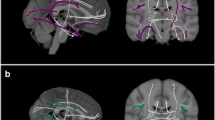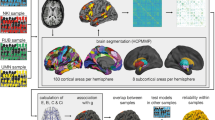Abstract
Resting state functional connectivity research has shown that general cognitive ability (GCA) is associated with brain resilience to targeted and random attacks (TAs and RAs). However, it remains to be seen if the finding generalizes to structural connectivity. Furthermore, individuals showing performance levels at the very high area of the GCA distribution have not yet been analyzed in this regard. Here we study the relation between TAs and RAs to structural brain networks and GCA. Structural and diffusion-weighted MRI brain images were collected from 189 participants: 60 high cognitive ability (HCA) and 129 average cognitive ability (ACA) individuals. All participants completed a standardized fluid reasoning ability test and the results revealed an average HCA-ACA difference equivalent to 33 IQ points. Automated parcellation of cortical and subcortical nodes was combined with tractography to achieve an 82 × 82 connectivity matrix for each subject. Graph metrics were derived from the structural connectivity matrices. A simulation approach was used to evaluate the effects of recursively removing nodes according to their network centrality (TAs) versus eliminating nodes at random (RAs). HCA individuals showed greater network integrity at baseline and prior to network collapse than ACA individuals. These effects were more evident for TAs than RAs. The networks of HCA individuals were less degraded by the removal of nodes corresponding to more complex information processing stages of the PFIT network, and from removing nodes with larger empirically observed centrality values. Analyzed network features suggest quantitative instead of qualitative differences at different levels of the cognitive ability distribution.






Similar content being viewed by others
References
Alstott J, Breakspear M, Hagmann P, Cammoun L, Sporns O (2009) Modeling the impact of lesions in the human brain (modeling lesions in human brain). PLoS Comput Biol 5(6):e1000408. https://doi.org/10.1371/journal.pcbi.1000408
Arden R, Luciano M, Deary IJ, Reynolds CA, Pedersen NL, Plassman BL, Visscher PM (2016) The association between intelligence and lifespan is mostly genetic. Int J Epidemiol 45(1):178–185. https://doi.org/10.1093/ije/dyv112
Barbey AK, Colom R, Solomon J, Krueger F, Forbes C, Grafman J (2012) An integrative architecture for general intelligence and executive function revealed by lesion mapping. Brain 135:1154–1164. https://doi.org/10.1093/brain/aws021
Barbey A, Colom R, Paul E, Grafman J (2014) Architecture of fluid intelligence and working memory revealed by lesion mapping. Brain Str Func 219(2):485–494. https://doi.org/10.1007/s00429-013-0512-z
Barbey A, Karama S, Haier R (eds) (2021) The Cambridge handbook of intelligence and cognitive neuroscience. Cambridge University Press, Cambridge
Basten U, Hilger K, Fiebach C (2015) Where smart brains are different: A quantitative meta-analysis of functional and structural brain imaging studies on intelligence. Intelligence 51:10
Calvin CM, Batty GD, Der G, Brett CE, Taylor A, Pattie A, Deary IJ (2017) Childhood intelligence in relation to major causes of death in 68 year follow-up: Prospective population study. British Med J Publish Group. https://doi.org/10.1136/bmj.j2708
Caspi A, Moffitt TE (2018) All for one and one for all: Mental disorders in one dimension. Am J Psychiatry 175(9):831–844. https://doi.org/10.1176/appi.ajp.2018.17121383
Clark VP, Coffman BA, Mayer AR, Weisend MP, Lane TDR, Calhoun VD, Wassermann EM (2012) TDCS guided using fMRI significantly accelerates learning to identify concealed objects. NeuroImage 59(1):117–128. https://doi.org/10.1016/j.neuroimage.2010.11.036
Cohen Kadosh R, Soskic S, Iuculano T, Kanai R, Walsh V (2010) Modulating neuronal activity produces specific and long-lasting changes in numerical competence. Curr Biol 20(22):2016–2020. https://doi.org/10.1016/j.cub.2010.10.007
Colom R (2014) From the earth to the brain. Person Individ Differ 61–62:3–6. https://doi.org/10.1016/j.paid.2013.12.025
Colom R, Román FJ (2018) Enhancing intelligence: From the group to the individual. J Intelligence 6(1):11. https://doi.org/10.3390/jintelligence6010011
Colom R, Thompson PM (2011) Understanding human intelligence by imaging the brain. The Wiley-Blackwell Handbook of Individual Differences. (pp. 330–352) Wiley-Blackwell
Colom R, Karama S, Jung RE, Haier RJ (2010) Human intelligence and brain networks. Dial Clin Neurosci 12(4): 489–501. Retrieved from https://pubmed.ncbi.nlm.nih.gov/21319494; https://www.ncbi.nlm.nih.gov/pmc/articles/PMC3181994/
Colom R, Burgaleta M, Román FJ, Karama S, Álvarez-Linera J, Abad FJ, Haier RJ (2013) Neuroanatomic overlap between intelligence and cognitive factors: Morphometry methods provide support for the key role of the frontal lobes. NeuroImage 72:143–152. https://doi.org/10.1016/j.neuroimage.2013.01.032
Davies G, Lam M, Harris SE, Trampush JW, Luciano M, Hill WD (2018) Study of 300,486 individuals identifies 148 independent genetic loci influencing general cognitive function. Nat Commun. https://doi.org/10.1038/s41467-018-04362-x
Deary IJ (2012) Looking for “system integrity” in cognitive epidemiology. Gerontology 58(6):545–553. https://doi.org/10.1159/000341157
Deary IJ, Weiss A, Batty GD (2010) Intelligence and personality as predictors of illness and death: How researchers in differential psychology and chronic disease epidemiology are collaborating to understand and address health inequalities. Psychol Sci Public Interest 11(2):53–79. https://doi.org/10.1177/1529100610387081
Desikan RS, Ségonne F, Fischl B, Quinn BT, Dickerson BC, Blacker D, Killiany RJ (2006) An automated labeling system for subdividing the human cerebral cortex on MRI scans into gyral based regions of interest. NeuroImage 31(3):968–980. https://doi.org/10.1016/j.neuroimage.2006.01.021
Dubois J, Galdi P, Paul LK, Adolphs R (2018) A distributed brain network predicts general intelligence from resting-state human neuroimaging data. Philos Trans Royal Soc London Series B Biol Sci. https://doi.org/10.1098/rstb.2017.0284
Ebisch SJ, Perrucci MG, Mercuri P, Romanelli R, Mantini D, Romani GL, Saggino A (2012) Common and unique neuro-functional basis of induction, visualization, and spatial relationships as cognitive components of fluid intelligence. NeuroImage 62(1):331–342. https://doi.org/10.1016/j.neuroimage.2012.04.053
Escorial S, Román F, J., Martínez, K., Burgaleta, M., Karama, S., & Colom, R. (2015) Sex differences in neocortical structure and cognitive performance: A surface-based morphometry study. NeuroImage 104:355–365. https://doi.org/10.1016/j.neuroimage.2014.09.035
Estrada E, Ferrer E, Roman FJ, Karama S, Colom R (2019) Time-lagged associations between cognitive and cortical development from childhood to early adulthood. Dev Psychol 55(6):1338–1352. https://doi.org/10.1037/dev0000716
Euler MJ (2018) Intelligence and uncertainty: Implications of hierarchical predictive processing for the neuroscience of cognitive ability. Neurosci Biobehav Rev 94:93–112. https://doi.org/10.1016/j.neubiorev.2018.08.013
Fischl B, van der Kouwe A, Destrieux C, Halgren E, Segonne F, Salat DH, Dale AM (2004) Automatically parcellating the human cerebral cortex. Cerebral Cortex (New York 1991) 14(1): 11–22. https://doi.org/10.1093/cercor/bhg087
Funder DC, Ozer DJ (2019) Evaluating effect size in psychological research: Sense and nonsense. Adv Methods Pract Psychol Sci 2(2):156–168. https://doi.org/10.1177/2515245919847202
Gignac GE, Bates TC (2017) Brain volume and intelligence: The moderating role of intelligence measurement quality. Intelligence 64:18–29. https://doi.org/10.1016/j.intell.2017.06.004
Gläscher J, Tranel D, Paul LK, Rudrauf D, Rorden C, Hornaday A, Adolphs R (2009) Lesion mapping of cognitive abilities linked to intelligence. Neuron 61(5):681–691. https://doi.org/10.1016/j.neuron.2009.01.026
Gläscher J, Rudrauf D, Colom R, Paul LK, Tranel D, Damasio H, Adolphs R (2010) Distributed neural system for general intelligence revealed by lesion mapping. Proc Natl Acad Sci USA 107(10):4705–4709. https://doi.org/10.1073/pnas.0910397107
Haier R (2016) The neuroscience of intelligence (Cambridge fundamentals of neuroscience in psychology). Cambridge University Press, Cambridge. https://doi.org/10.1017/9781316105771
Hegelund ER, Grønkjær M, Osler M, Dammeyer J, Flensborg-Madsen T, Mortensen EL (2020) The influence of educational attainment on intelligence. Intelligence. https://doi.org/10.1016/j.intell.2019.101419
Hill WD, Harris SE, Deary IJ (2019) What genome-wide association studies reveal about the association between intelligence and mental health. Curr Opin Psychology 27:25–30. https://doi.org/10.1016/j.copsyc.2018.07.007
Jung RE, Haier RJ (2007) The parieto-frontal integration theory (P-FIT) of intelligence: Converging neuroimaging evidence. Behav Brain Sci 30(2):135–154. https://doi.org/10.1017/S0140525X07001185
Karama S, Colom R, Johnson W, Deary IJ, Haier R, Waber DP, Evans AC (2011) Cortical thickness correlates of specific cognitive performance accounted for by the general factor of intelligence in healthy children aged 6 to 18. NeuroImage 55(4):1443–1453. https://doi.org/10.1016/j.neuroimage.2011.01.016
Karama S, Bastin ME, Murray C, Royle NA, Penke L, Munoz Maniega S, Deary IJ (2014) Childhood cognitive ability accounts for associations between cognitive ability and brain cortical thickness in old age. Mol Psychiatry 19(5):555–559. https://doi.org/10.1038/mp.2013.64
Karpinski RI, Kinase Kolb AM, Tetreault NA, Borowski TB (2018) High intelligence: A risk factor for psychological and physiological overexcitabilities. Intelligence (Norwood) 66:8–23. https://doi.org/10.1016/j.intell.2017.09.001
Keizer AW, Verschoor M, Verment RS, Hommel B (2010) The effect of gamma enhancing neurofeedback on the control of feature bindings and intelligence measures. Int J Psychophysiol 75(1):25–32. https://doi.org/10.1016/j.ijpsycho.2009.10.011
Martínez K, Colom R (2021) Imaging the intelligence of humans. In: Barbey AK, Karama S, Haier RJ (eds) The Cambridge Handbook of Intelligence and Cognitive Neuroscience. Cambridge University Press (In Press), Cambridge
Martínez K, Madsen SK, Joshi AA, Joshi SH, Román FJ, Villalon-Reina J, Colom R (2015) Reproducibility of brain-cognition relationships using three cortical surface-based protocols: An exhaustive analysis based on cortical thickness. Hum Brain Mapp 36(8):3227–3245. https://doi.org/10.1002/hbm.22843
McTeague LM, Huemer J, Carreon DM, Jiang Y, Eickhoff SB, Etkin A (2017) Identification of common neural circuit disruptions in cognitive control across psychiatric disorders. Am J Psychiatry 174(7):676–685. https://doi.org/10.1176/appi.ajp.2017.16040400
Moore TM, Reise SP, Gur RE, Hakonarson H, Gur RC (2015) Psychometric properties of the Penn Computerized Neurocognitive Battery. Neuropsychology 29(2):235–246. https://doi.org/10.1037/neu0000093
Pineda-Pardo J, Martínez K, Román F (2016) Structural efficiency within a parieto-frontal network and cognitive differences. Intelligence 54:105–116. https://doi.org/10.1016/j.intell.2015.12.002
Román FJ, Iturria-Medina Y, Martínez K, Karama S, Burgaleta M, Evans AC, Colom R (2017) Enhanced structural connectivity within a brain sub-network supporting working memory and engagement processes after cognitive training. Neurobiol Learn Memory 141:33–43. https://doi.org/10.1016/j.nlm.2017.03.010
Román FJ, Abad FJ, Escorial S, Burgaleta M, Martínez K, Álvarez-Linera J, Colom R (2014) Reversed hierarchy in the brain for general and specific cognitive abilities: A morphometric analysis. Hum Brain Mapp 35(8):3805–3818. https://doi.org/10.1002/hbm.22438
Román FJ, Lewis L, Chen C, Karama S, Burgaleta M, Martínez K, Colom R (2016) Gray matter responsiveness to adaptive working memory training: A surface-based morphometry study. Brain Struct Funct 221(9):4369–4382. https://doi.org/10.1007/s00429-015-1168-7
Ruíz Sánchez De León JM, Quiroga MÁ, Colom R (2019) Intelligence and executive function: Can we reunite these disparate worlds? In: McFarland DJ (ed) General and specific mental abilities. Cambridge Scholars Publisher, Cambridge, UK, pp 311–339
Santarnecchi E, Rossi S (2016) Advances in the neuroscience of intelligence: From brain connectivity to brain perturbation. Spanish J Psychol 19:E94
Santarnecchi E, Polizzotto NR, Godone M, Giovannelli F, Feurra M, Matzen L, Rossi S (2013) Frequency-dependent enhancement of fluid intelligence induced by transcranial oscillatory potentials. Curr Biol 23(15):1449–1453. https://doi.org/10.1016/j.cub.2013.06.022
Santarnecchi E, Galli G, Polizzotto NR, Rossi A, Rossi S (2014) Efficiency of weak brain connections support general cognitive functioning. Hum Brain Mapp 35(9):4566–4582. https://doi.org/10.1002/hbm.22495
Santarnecchi E, Rossi S, Rossi A (2015) The smarter, the stronger: Intelligence level correlates with brain resilience to systematic insults. Cortex 64:293–309. https://doi.org/10.1016/j.cortex.2014.11.005
Smith RE, Tournier JD, Calamante F, Connelly A (2013) SIFT: Spherical-deconvolution informed filtering of tractograms. NeuroImage 67:298–312. https://doi.org/10.1016/j.neuroimage.2012.11.049
Sporns O, Zwi JD (2004) The small world of the cerebral cortex. Neuroinformatics 2(2):145–162
Sternberg RJ (2020) The Cambridge Handbook of Intelligence. Cambridge University Press, Cambridge, UK
Vaidya AR, Pujara MS, Petrides M, Murray EA, Fellows LK (2019) Lesion studies in contemporary neuroscience. Trends Cogn Sci 23(8):653–671. https://doi.org/10.1016/j.tics.2019.05.009
Vakhtin AA, Ryman SG, Flores RA, Jung RE (2014) Functional brain networks contributing to the parieto-frontal integration theory of intelligence. NeuroImage 103:349–354. https://doi.org/10.1016/j.neuroimage.2014.09.055
van Den Heuvel MP, Sporns O (2013) Network hubs in the human brain. Trends Cogn Sci 17(12):683–696. https://doi.org/10.1016/j.tics.2013.09.012
Acknowledgements
The study reported here was supported by research project ‘PSI2017-82218-P’ funded by ‘Ministerio de Economía, Industria y Competitividad’ (Spain). We thank MENSA-Spain for supporting the recruitment of high cognitive ability volunteers that participated in the present research. We thank Human Connectome Project (HCP) for providing access to their database and for addressing our questions regarding sample characteristics. We also thank the University of Pennsylvania for providing access to their computerized neuropsychological battery.
Author information
Authors and Affiliations
Corresponding author
Additional information
Publisher's Note
Springer Nature remains neutral with regard to jurisdictional claims in published maps and institutional affiliations.
Supplementary Information
Below is the link to the electronic supplementary material.


Rights and permissions
About this article
Cite this article
Santonja, J., Martínez, K., Román, F.J. et al. Brain resilience across the general cognitive ability distribution: Evidence from structural connectivity. Brain Struct Funct 226, 845–859 (2021). https://doi.org/10.1007/s00429-020-02213-4
Received:
Accepted:
Published:
Issue Date:
DOI: https://doi.org/10.1007/s00429-020-02213-4




